6.2.1 Nerve Impulses
1/14
There's no tags or description
Looks like no tags are added yet.
Name | Mastery | Learn | Test | Matching | Spaced |
|---|
No study sessions yet.
15 Terms
describe the two main forms of coordination (6)
the Nervous System
- uses neurones to pass electrical impulses
- quick transmission and response
- response is short-lived and localised
the Hormonal System
- uses hormones transported in blood to target cells
- slow transmission and response
- response is long-lasting and widespread
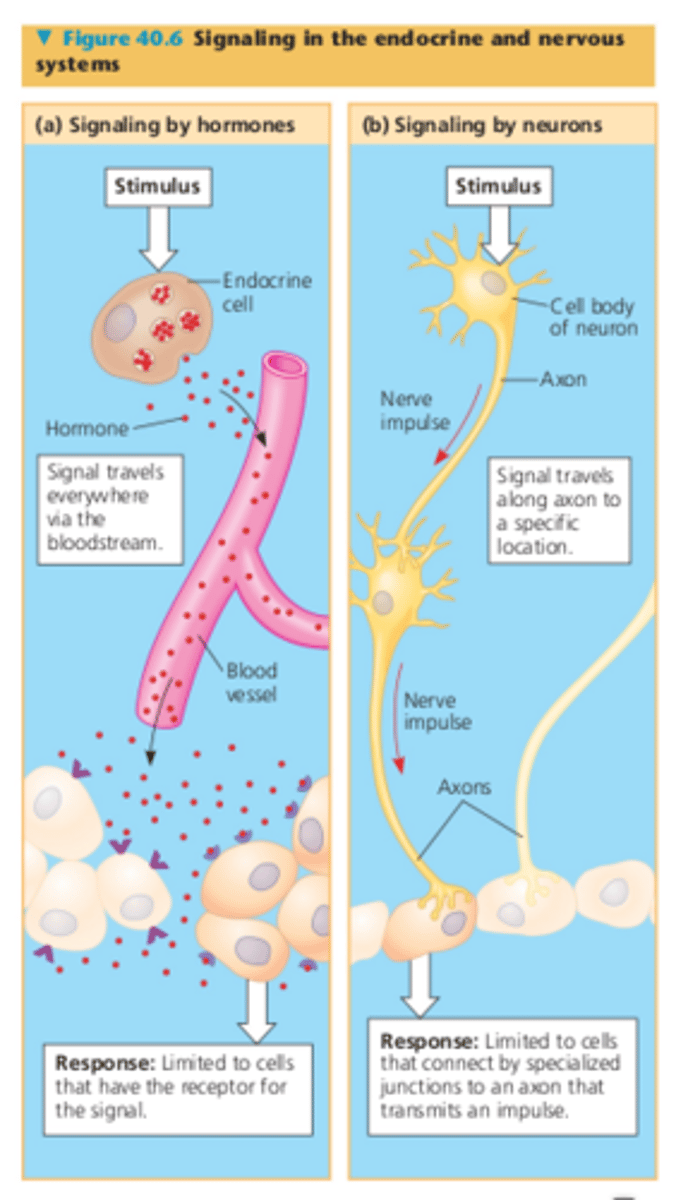
structure of myelinated motor neurone
cell body, dendrites, axon, schwann cells, myelin sheath, nodes of ranvier, axon terminal
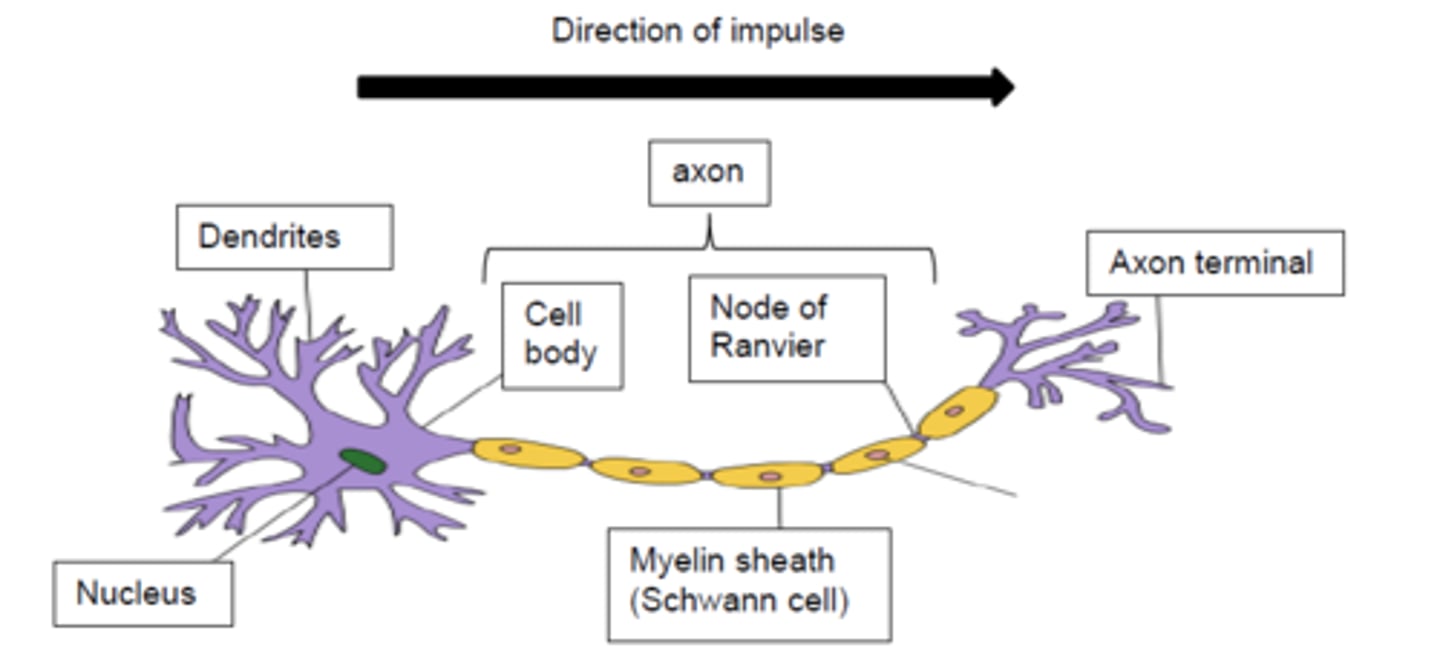
axon
long fibre that carries impulses away from the cell body of a neuron
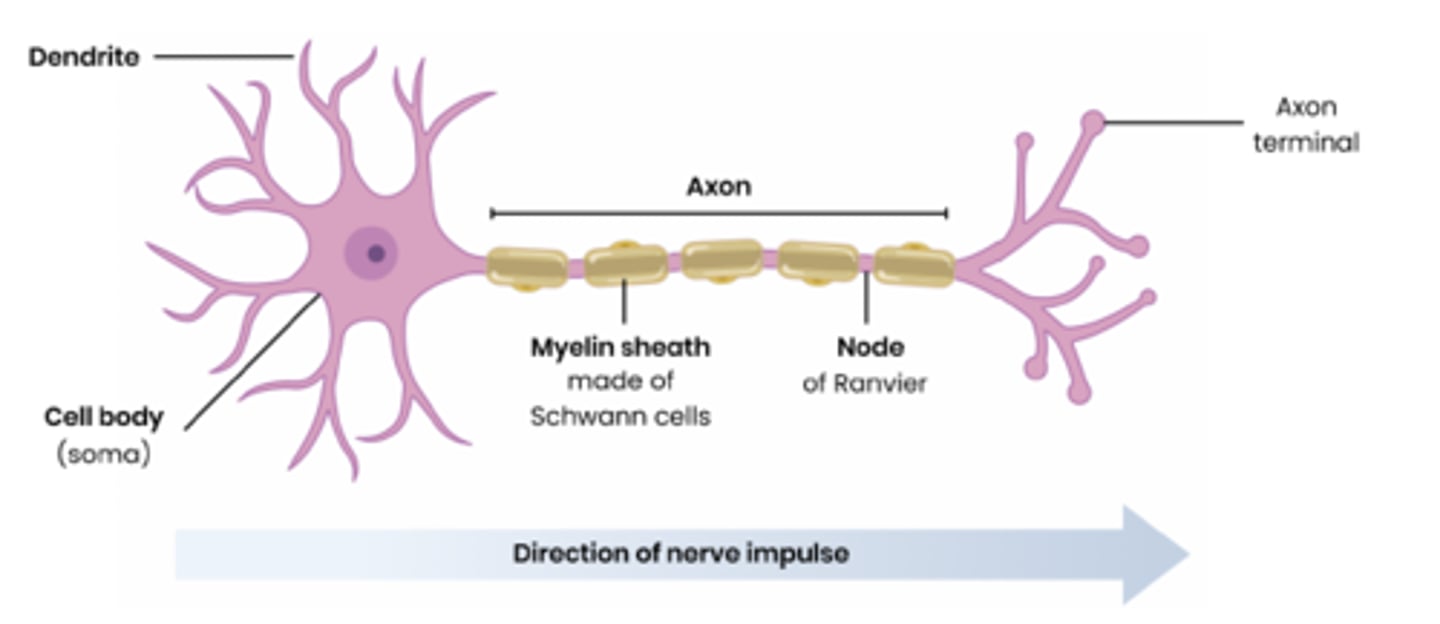
resting potential
- inside of axon has a negative charge relative to outside, as there are more positive ions outside than inside
- usually -65 mV in humans
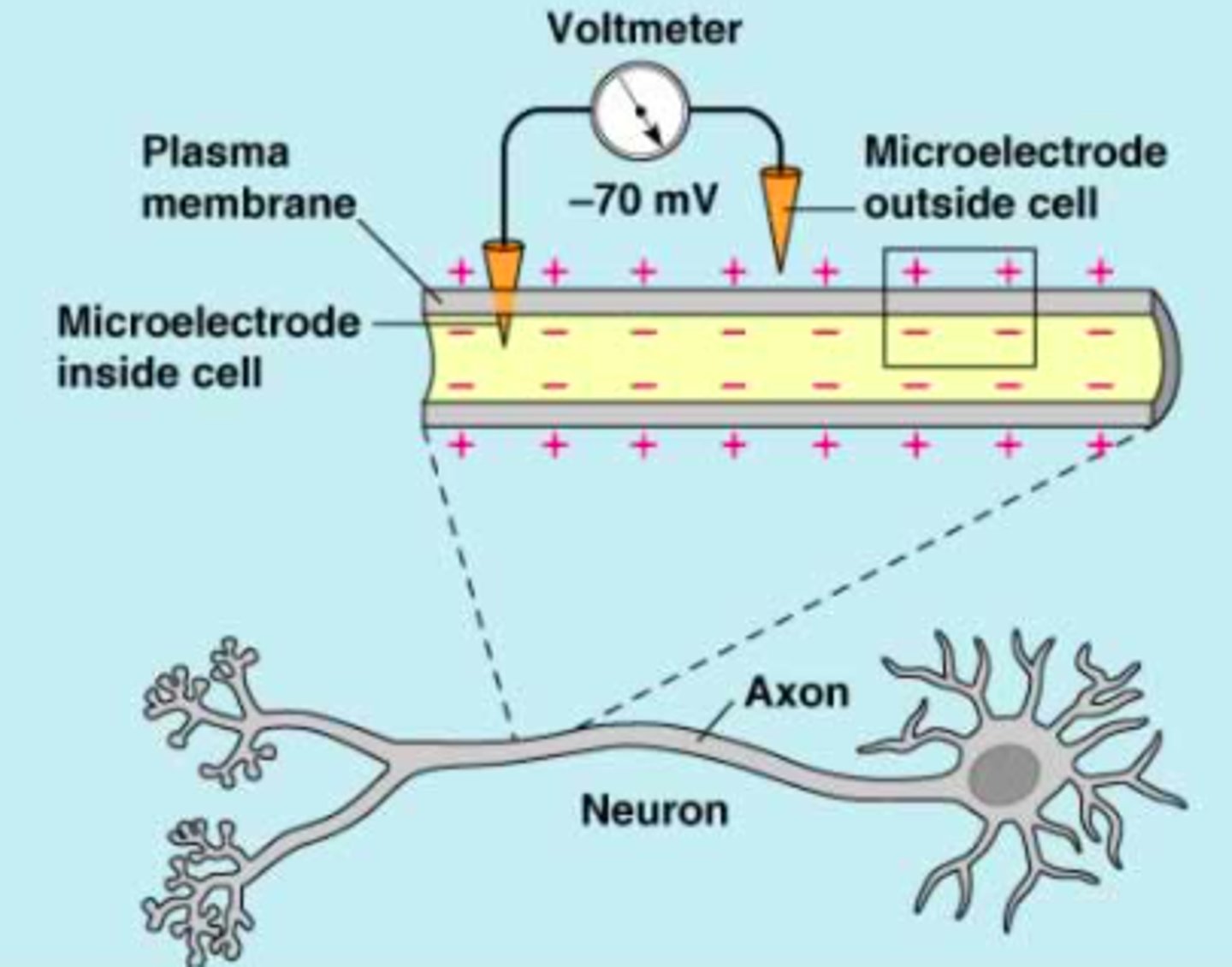
explain how a resting potential is established (5)
1. sodium potassium pump actively transports Na+ out of the axon and K+ into axon
2. this creates an electrochemical gradient, where there is higher K+ conc. inside and higher Na+ conc. outside
3. membrane is more permeable to K+, so it can move back out by facilitated diffusion
4. membrane is less permeable to Na+ as the voltage gated sodium channels are closed, so Na+ cannot diffuse back in
5. therefore, inside of axon has a negative charge relative to outside
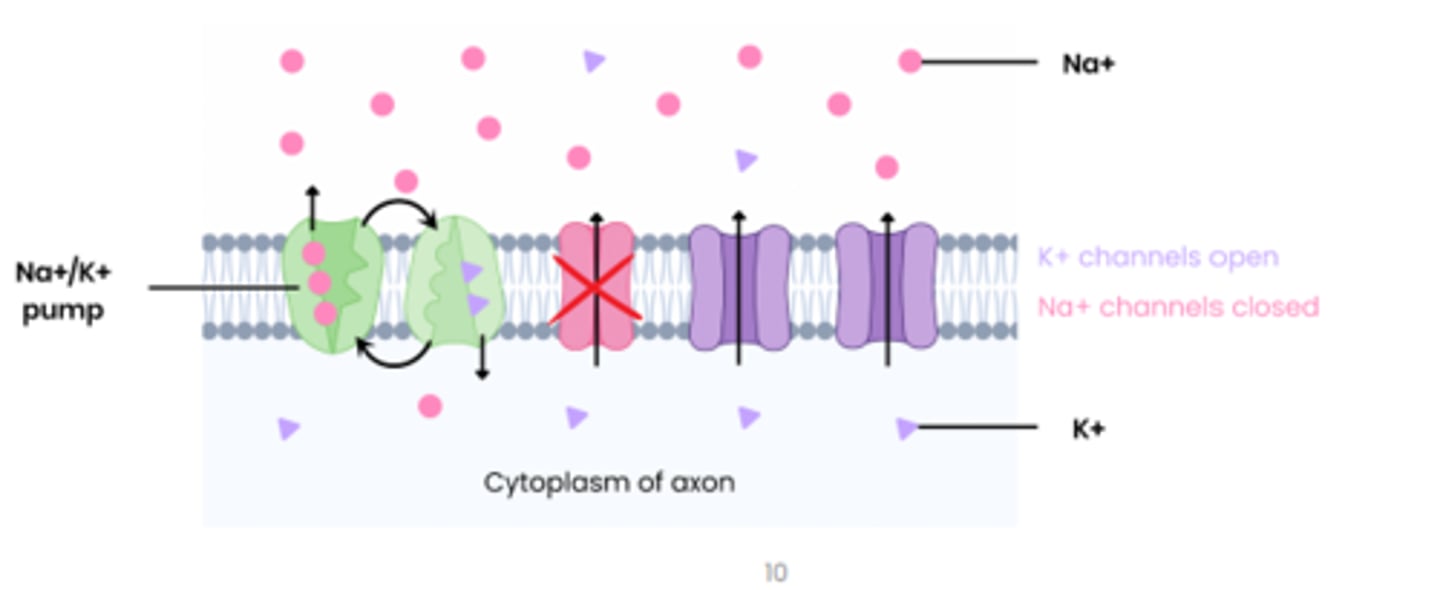
Explain how changes in membrane permeability lead to depolarisation and the generation of an action potential (5)
sodium voltage gated channels open, sodium ions diffuse in causing depolarisation
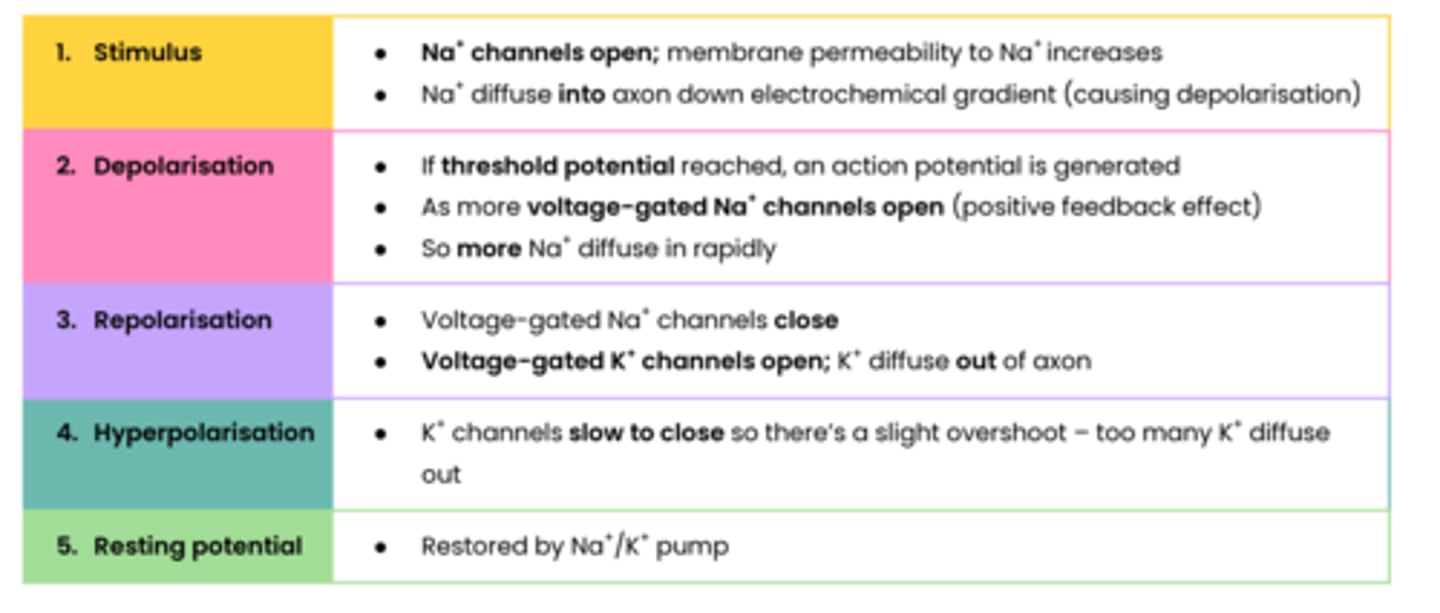
draw and label a graph showing an action potential
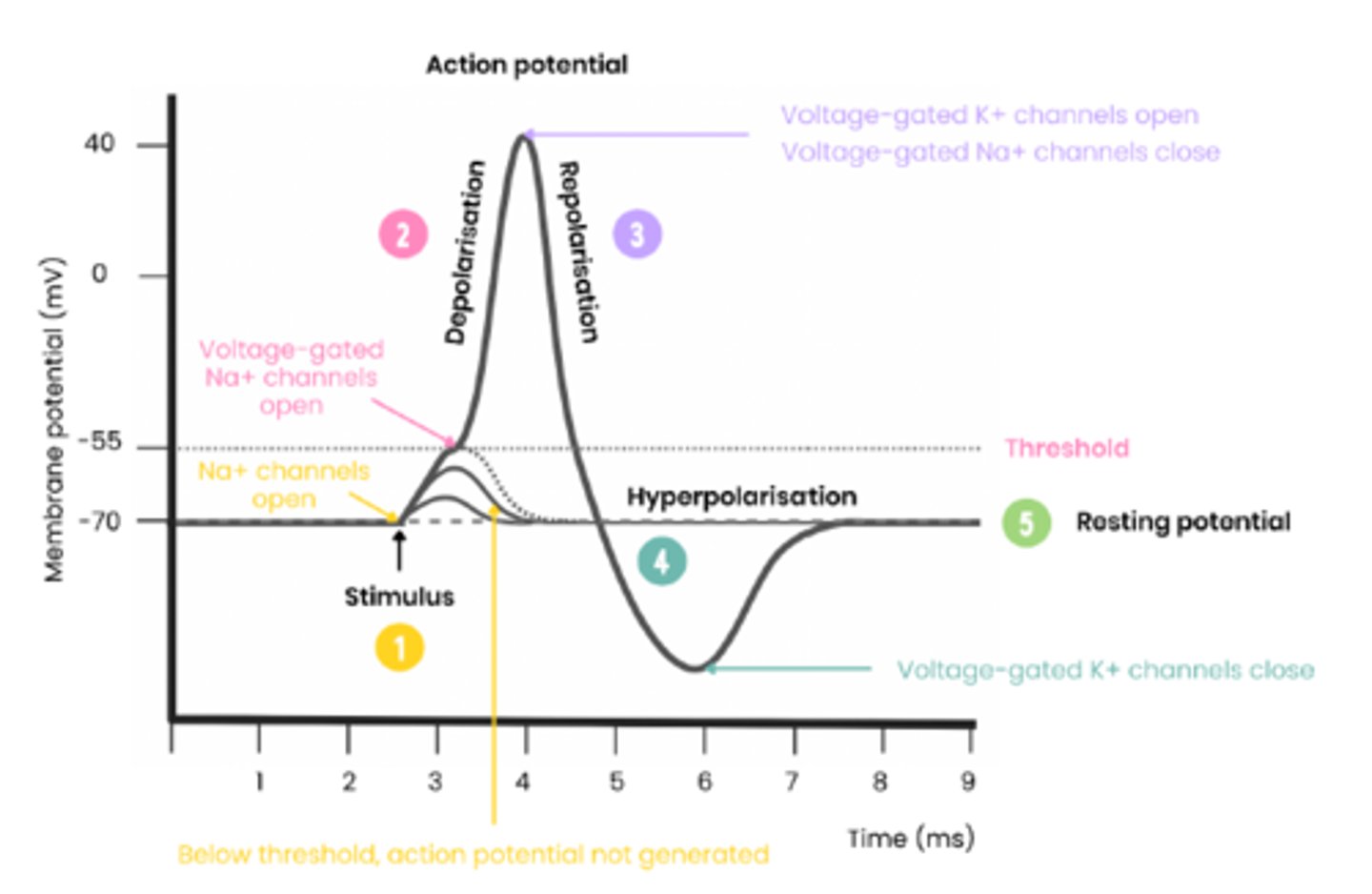
describe the all or nothing principle (2)
1. For an action potential to be produced, depolarisation must exceed threshold potential
2. the action potentials produced are always the same magnitude/will peak at same potential
(strength of stimulus is therefore not perceived by the size of the action potential)
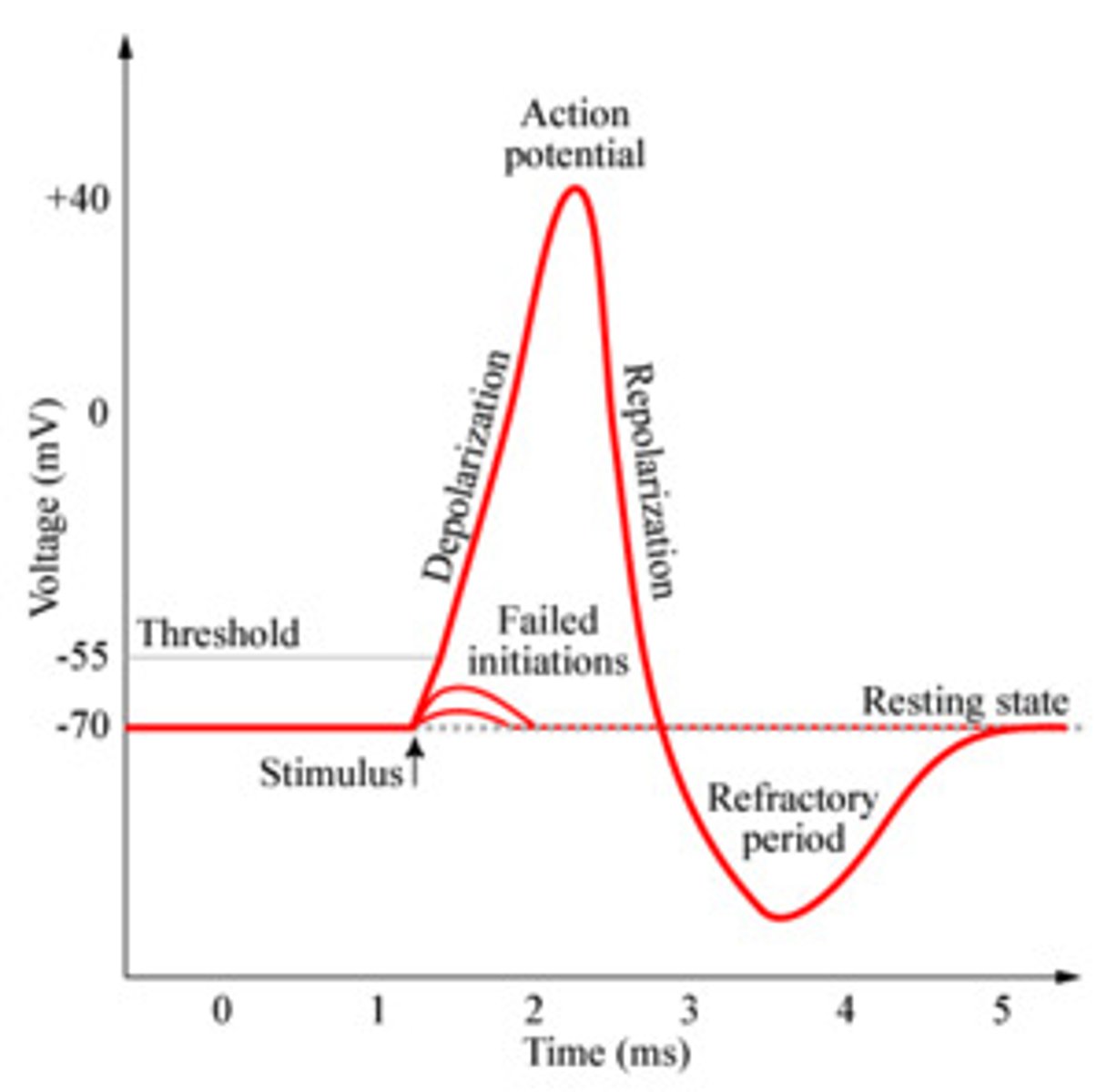
how does organism perceive strength of stimulus if not through size of action potential?
the larger the stimulus, the higher the FREQUENCY of action potentials
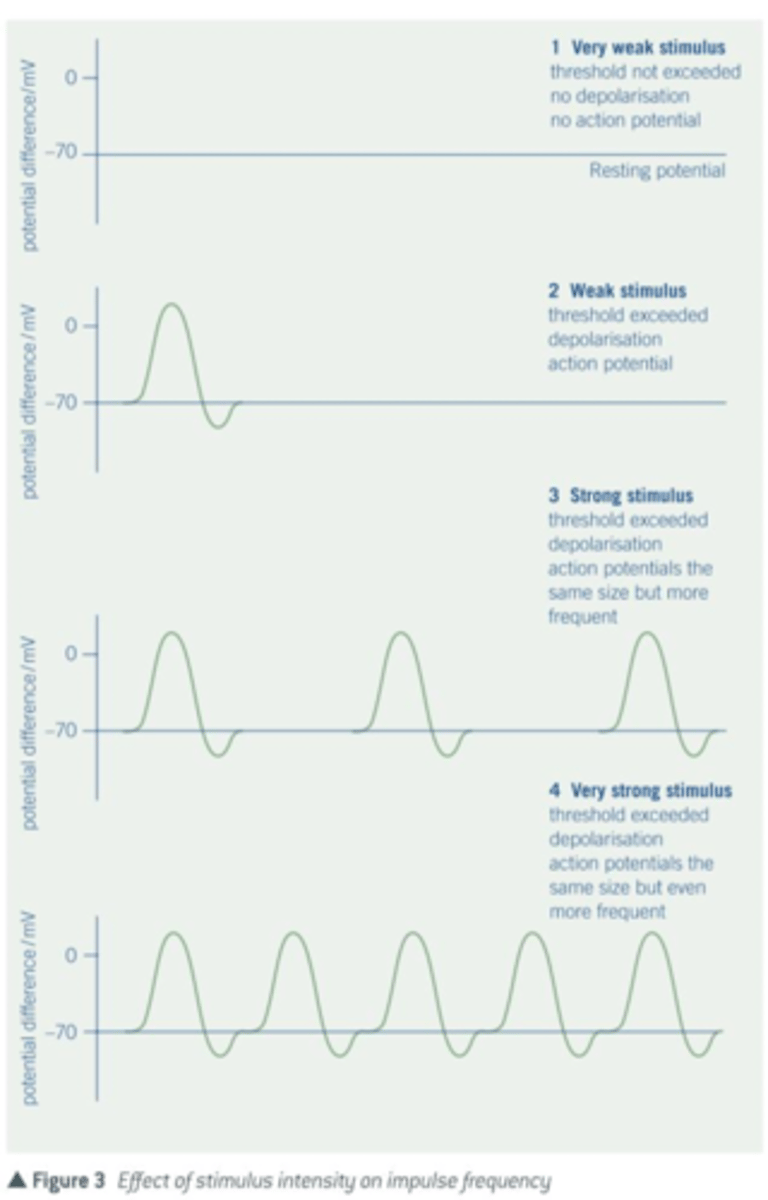
Explain the passage of an action potential along a non-myelinated axon (3)
1. action potential passes as a wave of depolarisation
2. the influx of Na+ in one region establishes localised electrical currents, which cause voltage-gated sodium ion channels in the adjoining region to open
3. increases permeability of adjoining region to Na+ so adjoining region depolarises
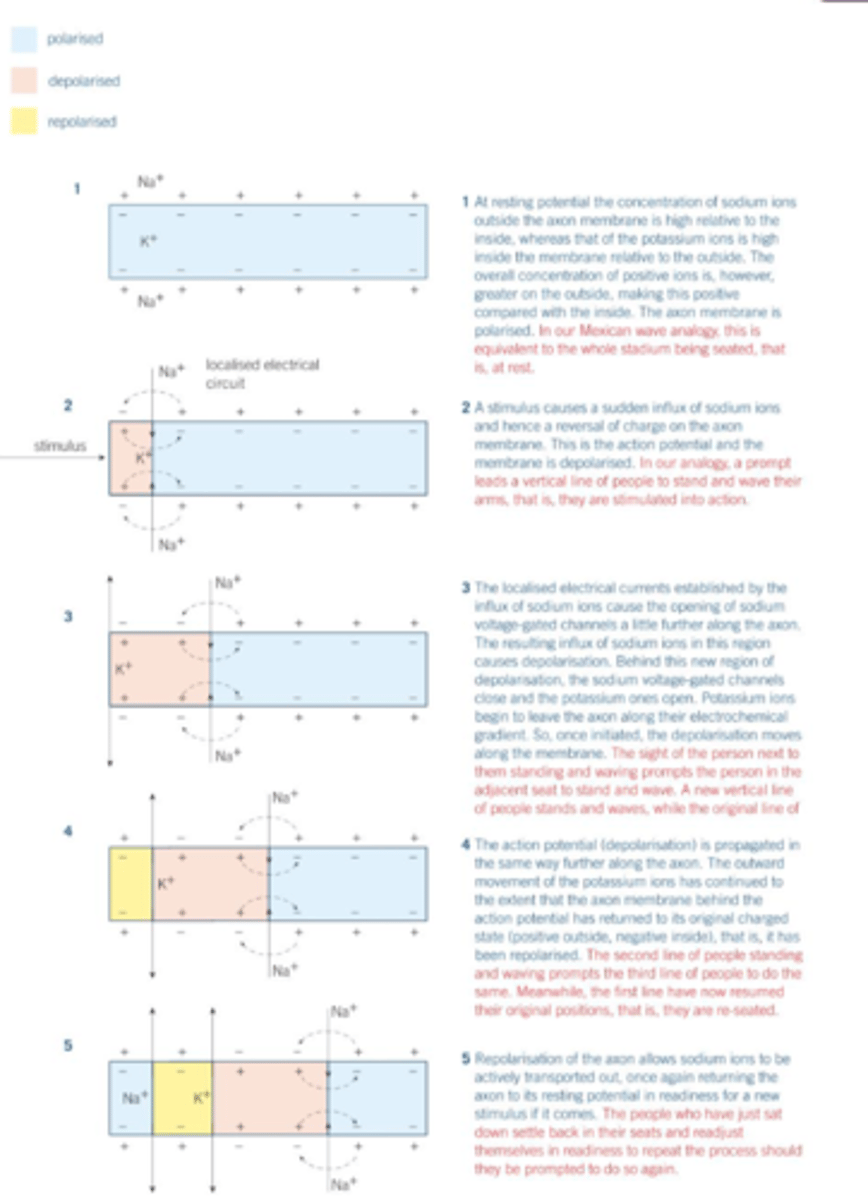
Explain the passage of an action potential along a myelinated axon (4)
1. myelination provides electrical insulation, preventing action potentials from forming there
2. depolarisation will only occur at the Nodes of Ranvier
3. saltatory conduction, where action potentials "jump" from node to node
4. therefore, action potential passes faster along a myelinated axon - since depolarisation doesn't need to occur along the whole length of axon
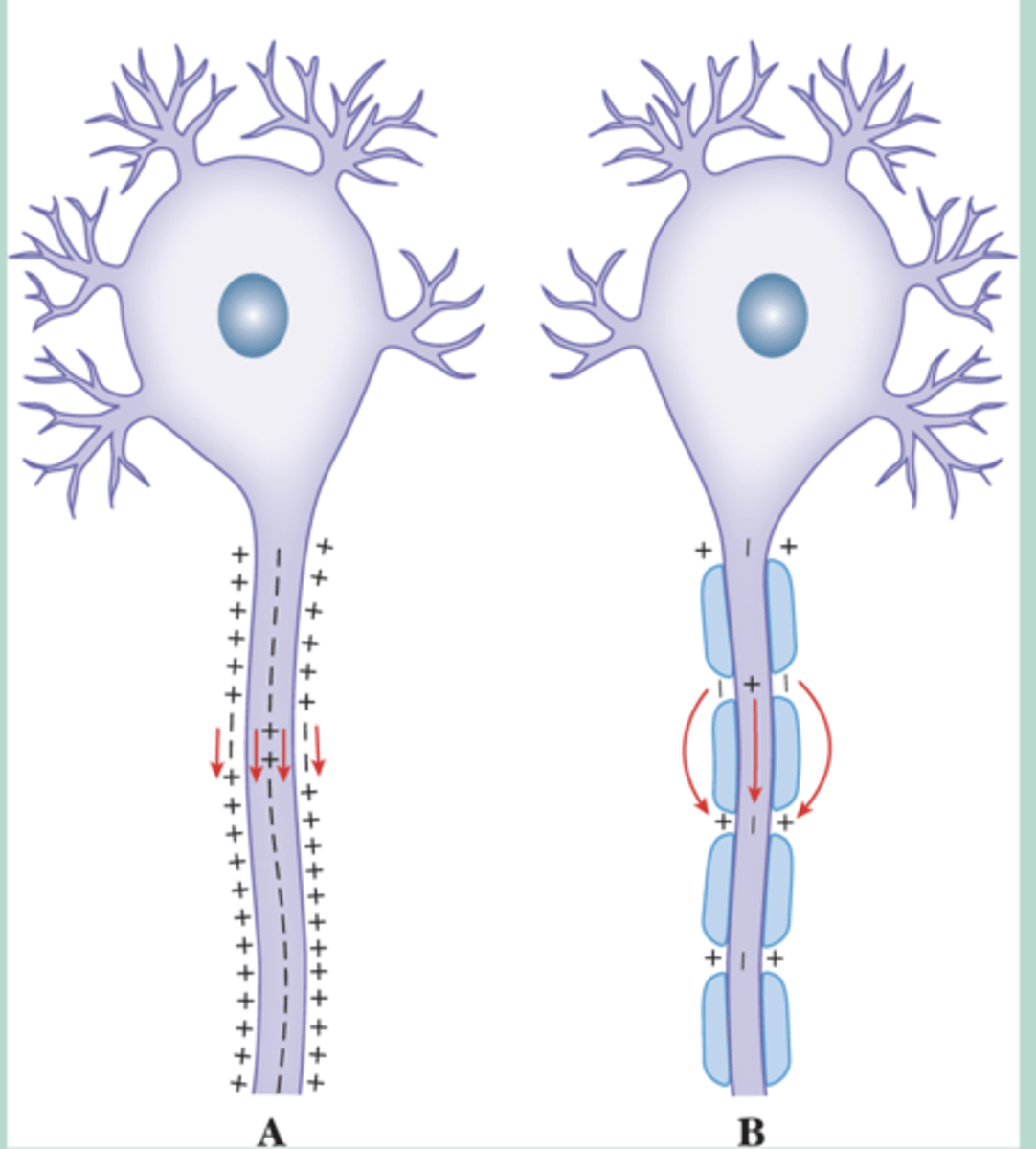
Suggest how damage to the myelin sheath can lead to slow responses and jerky movement (3)
slow responses:
- there will be less saltatory conduction so depolarisation needs to occur along the whole length of axon
- impulse takes a longer time to reach neuromuscular junction causing a delay in muscle contraction
jerky movement:
- ions may leak to other neurones, causing the wrong muscles to contract
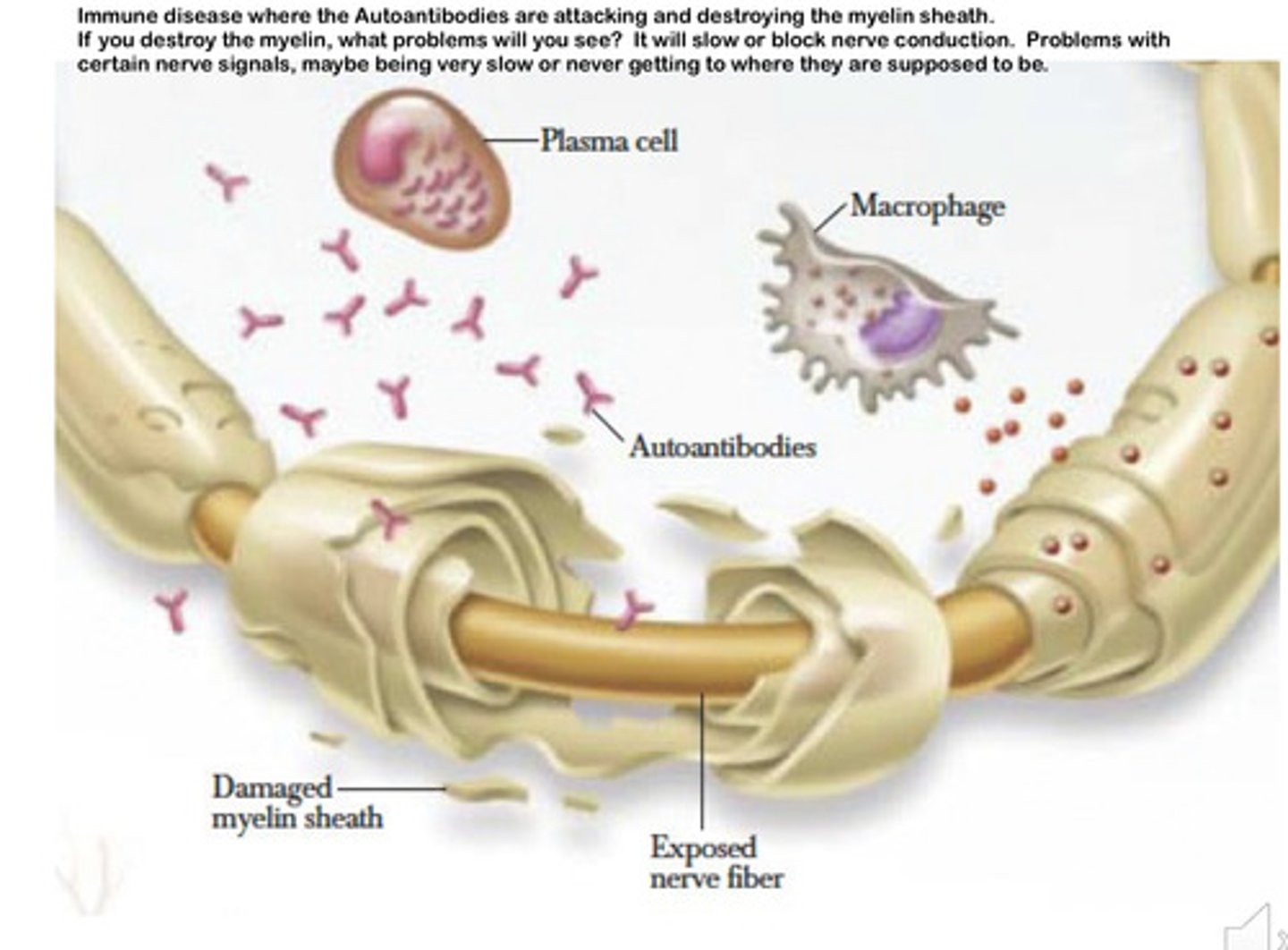
describe the nature of the refractory period (3)
- time where no further action potential can take place
- as all Na+ voltage gated channels are closed
- this time is taken to restore resting potential
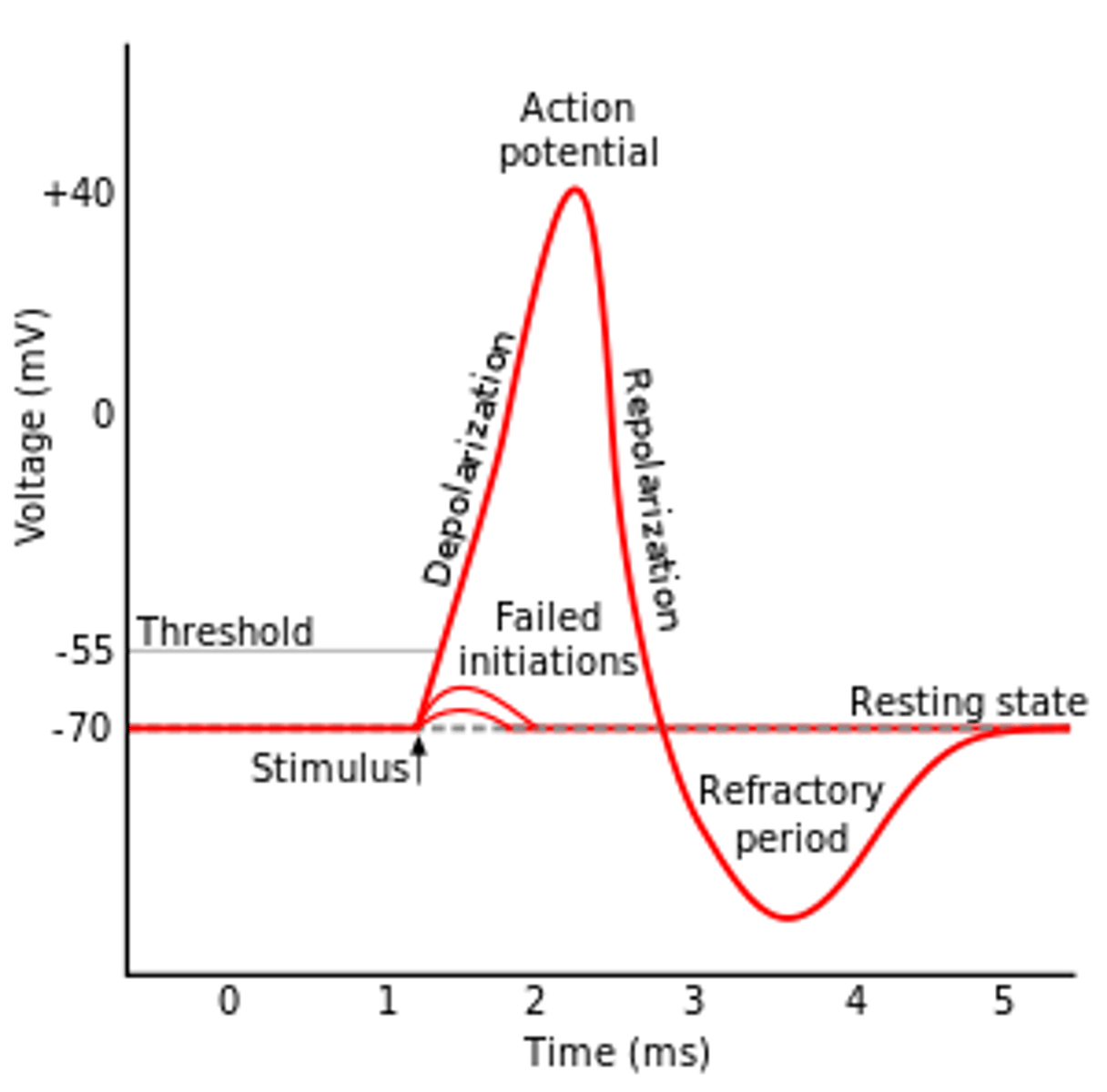
explain 3 reasons for the importance of refractory period
1. ensures action potentials are propagated in only ONE DIRECTION
2. produces DISCRETE impulses so action potentials can't form immediately after one another
3. LIMITS number/frequency of action potentials to prevent overreaction to a particularly strong stimulus
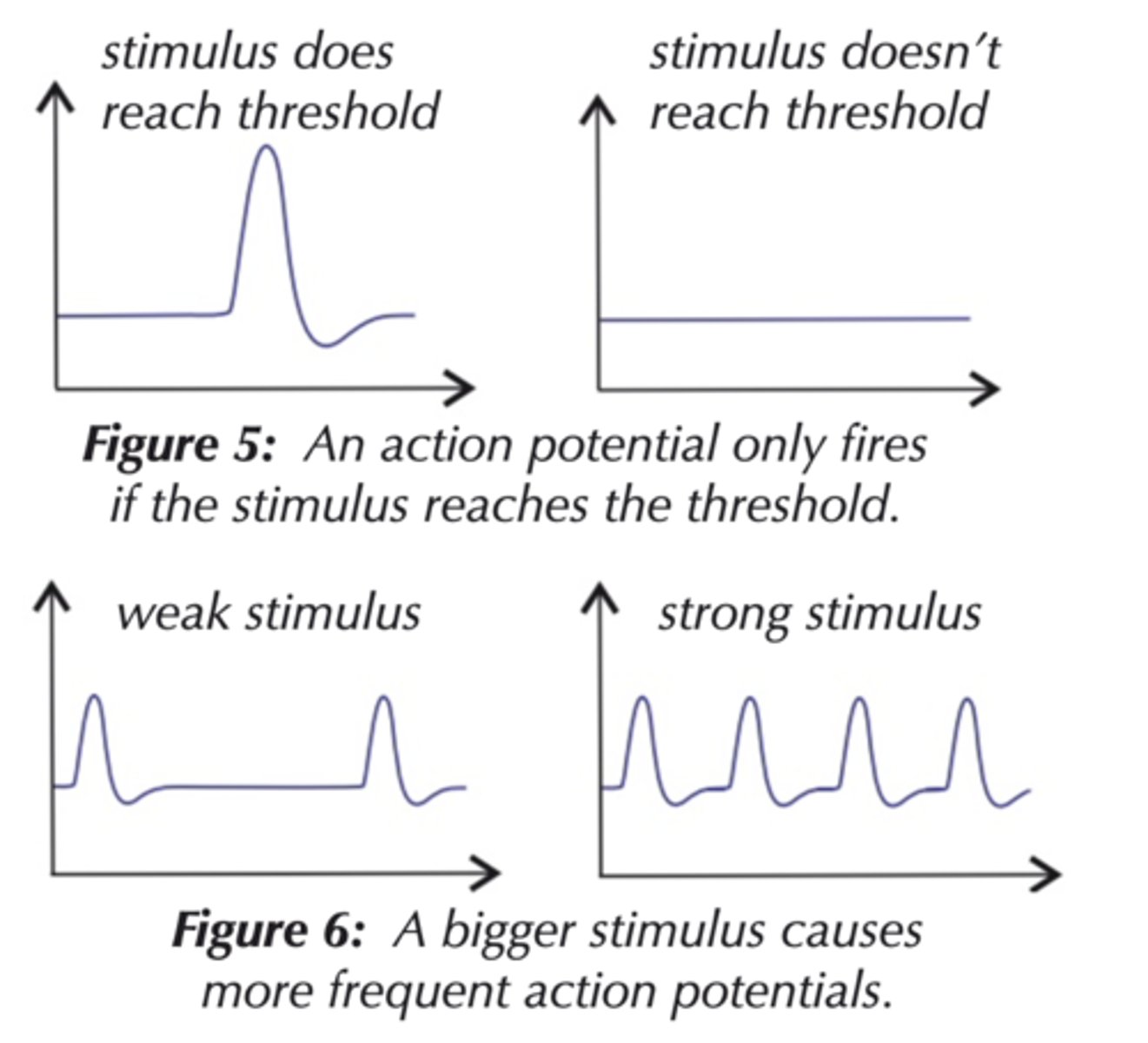
describe factors affecting speed of conductance (3)
- Myelination (increases)
- Axon diameter (increases)
- Temperature (increases then decreases) because proteins like the sodium potassium pump may denature
